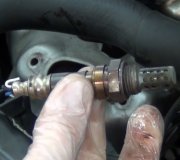Friday, March 10th, 2023 AT 3:46 PM
I am trying to remove the head and don't want to fool with removing the exhaust manifold, so I won't break any bolts. I tried removing the 2 bolts on the exhaust pipe hooking up to the exhaust manifold, but they had these stupid square nuts on the other side, and so the one on the bottom came out, but one on top which you cannot see the nut is turning with the bolt, no way to put a socket or a wrench on it, you cannot even see the nut as it is so close to the head and goes underneath it. I have never seen anything like this before, spent 3 hours with no success. Any tips? Why don't these have any empty room to see through when taking fender wells? It's all frame, metal, nothing like other cars I have seen.


